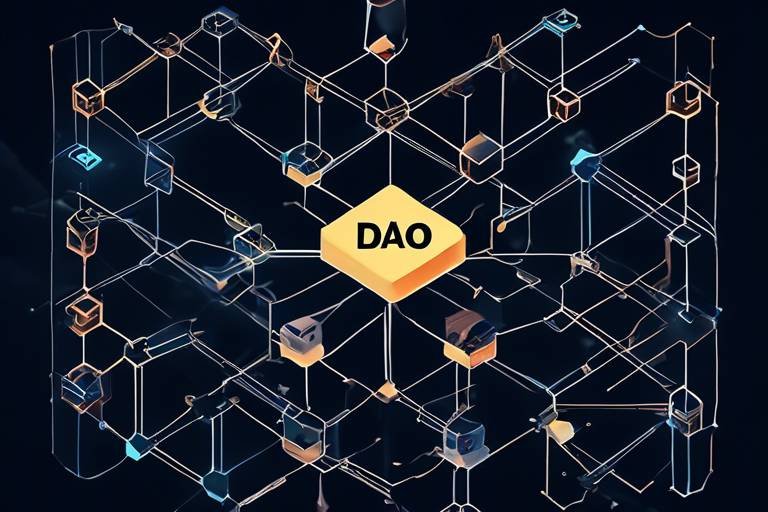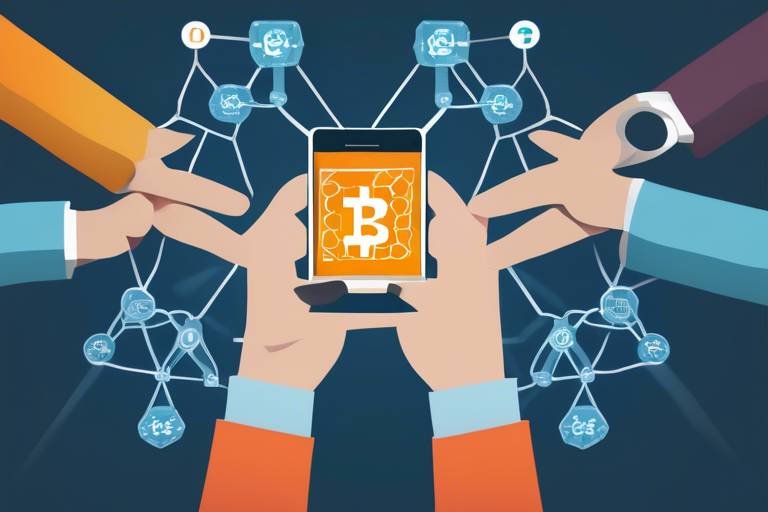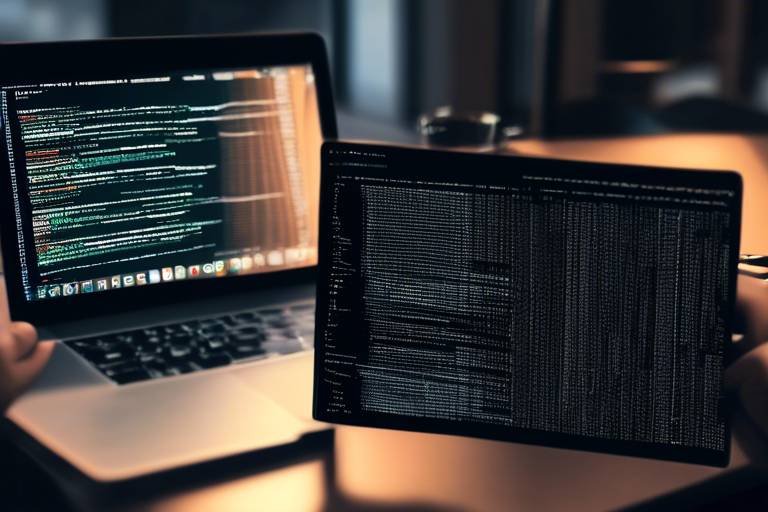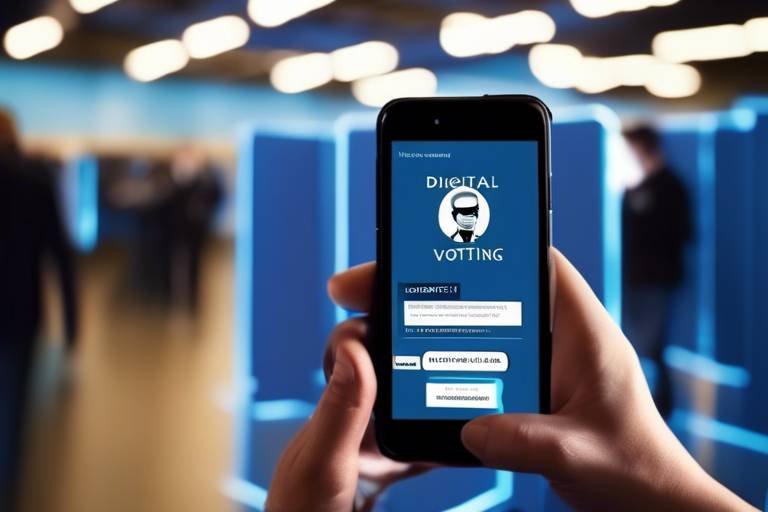The Importance of Decentralization in Blockchain Technology
Decentralization is more than just a buzzword in the world of technology; it’s a revolutionary concept that underpins the very fabric of blockchain. Imagine a world where no single entity holds the keys to your data, where transactions are transparent yet secure, and where you, the user, have full control over your digital assets. This is the promise of decentralization, and in this article, we will dive deep into its significance, benefits, challenges, and its transformative impact across various industries.
At its core, decentralization refers to the distribution of authority, data, and control away from a central point. Unlike traditional systems where a central authority, such as a bank or government, manages and verifies transactions, blockchain technology operates on a network of nodes. Each node is an independent participant that verifies transactions, ensuring that no single entity can manipulate the system. This structure not only enhances security but also fosters transparency, making it nearly impossible for bad actors to alter the data without consensus from the network.
The advantages of decentralization are numerous and profoundly impactful. By distributing power among users, blockchain technology creates a more secure and equitable system. Here are some key benefits:
- Increased Security: With no central point of failure, decentralized networks are less vulnerable to attacks.
- Reduced Fraud: The transparency of transactions makes it easier to detect and prevent fraudulent activities.
- Greater User Control: Users have complete ownership of their data, leading to enhanced privacy and autonomy.
One of the standout benefits of decentralization is enhanced security. In a decentralized network, data is stored across multiple nodes, making it incredibly challenging for hackers to breach the system. Imagine trying to break into a vault that’s scattered across a city; you’d have to crack numerous locks instead of just one. This distributed nature significantly reduces vulnerabilities, protecting data integrity against hacks and attacks.
Data integrity is crucial for building trust in any digital system. In the context of blockchain, decentralization ensures that once a transaction is recorded, it cannot be tampered with. Each transaction is cryptographically secured and linked to previous transactions, creating an immutable ledger. This fosters confidence among users and stakeholders, as they can be assured that the information they are interacting with is accurate and reliable.
Decentralized systems are inherently resistant to censorship. This means that no single entity can dictate what information is shared or suppressed. In a world where digital freedom is often under threat, this feature empowers users and promotes freedom of expression in digital communications and transactions. Think of it as having a megaphone in a crowded room; everyone can hear you, and no one can turn it off.
Decentralization shifts power from centralized authorities to individual users. This empowerment is not just about control; it leads to greater participation and innovation within blockchain ecosystems. When users feel they have a stake in the system, they are more likely to engage actively, contribute ideas, and develop new applications that can benefit the community as a whole. It’s like transforming a passive audience into an active participant in a concert, where everyone has a role to play in creating the experience.
While the benefits are clear, decentralization does not come without its challenges. There are several key obstacles that need to be addressed for successful implementation:
- Scalability Issues: As more users join a decentralized network, the demand for transaction processing increases, potentially leading to delays and inefficiencies.
- Governance Complexities: Decentralized governance can create complexities in decision-making, as reaching consensus among a diverse group can be challenging.
Scalability is a pressing concern for decentralized networks. Current blockchain solutions often struggle to keep up with the rapid pace of transactions, leading to bottlenecks. Imagine a highway during rush hour; the more cars there are, the slower everyone moves. Potential strategies to improve transaction speed and efficiency include implementing layer-two solutions and enhancing the underlying blockchain protocols.
Decentralized governance can create complexities in decision-making. Different governance models exist within blockchain, each with its own implications for network management and user participation. Whether it's a proof-of-stake system or a more democratic voting process, understanding these models is essential for ensuring that all voices are heard and that the network evolves in a way that benefits everyone.
What is decentralization in blockchain?
Decentralization in blockchain refers to the distribution of control and data across a network, ensuring that no single entity can manipulate the system.
How does decentralization enhance security?
By spreading data across multiple nodes, decentralization reduces vulnerabilities and protects against hacks and data breaches.
What are the challenges of decentralization?
Key challenges include scalability issues and complexities in governance that can hinder effective decision-making and transaction processing.

[Understanding Decentralization]
Decentralization is a foundational concept in blockchain technology, and understanding it is crucial for anyone looking to grasp the future of digital transactions. But what exactly does decentralization mean? In simple terms, decentralization refers to the distribution of authority, data, and control across a network, rather than having a single, central point of control. Imagine a traditional bank, where all transactions and records are managed by a central authority. In contrast, a decentralized system operates like a vast web where every node (or participant) has equal authority, contributing to the network's overall integrity and functionality.
The core principles of decentralization lie in transparency, security, and user empowerment. Unlike centralized systems that can be vulnerable to attacks or corruption, decentralized networks enhance security by dispersing data across multiple locations. This means that even if one node is compromised, the entire system remains intact. Additionally, decentralization fosters transparency, as all transactions are recorded on a public ledger that anyone can access. This level of openness builds trust among users, as they can independently verify transactions without relying on a third party.
To illustrate the difference between centralized and decentralized systems, consider the following table:
| Feature | Centralized Systems | Decentralized Systems |
|---|---|---|
| Control | Single entity controls the system | No single point of control; power is distributed |
| Security | Vulnerable to hacks and corruption | More resilient due to distributed nature |
| Transparency | Limited visibility; often opaque | Open ledger accessible to all users |
| User Empowerment | Users have limited control | Users have significant control and influence |
In essence, decentralization transforms the way we think about control and trust in digital transactions. It breaks down the barriers imposed by traditional systems and creates a more inclusive and participatory environment. This paradigm shift is not just a technological advancement; it's a movement towards a more equitable digital landscape where users can interact without the fear of censorship or manipulation. So, the next time you think about blockchain, remember that at its heart lies the powerful principle of decentralization, which is reshaping industries and redefining the future of digital interactions.

[Benefits of Decentralization]
Decentralization is like a breath of fresh air in the often stale atmosphere of centralized systems. Imagine a world where power isn’t concentrated in a single entity, but rather distributed among many. This shift not only enhances security but also empowers users, making it a game-changer in various sectors. Let’s dive into the myriad benefits that decentralization brings to the table, shall we?
One of the most compelling advantages of decentralization is increased security. Traditional centralized systems are akin to a fortress with a single gate; if that gate is breached, everything inside is at risk. In contrast, decentralized networks operate like a series of interconnected villages, each with its own defenses. This distribution of data means that even if one node is compromised, the integrity of the entire network remains intact. Thus, the chances of a successful hack diminish significantly.
Moreover, decentralization significantly reduces the risk of fraud. In a centralized system, a single point of failure can lead to catastrophic losses. However, in a decentralized framework, the consensus mechanism requires multiple nodes to validate transactions, making it far more challenging for malicious actors to manipulate the system. This robust verification process fosters a sense of trust among users, as they know that their transactions are secure and transparent.
Another crucial benefit is greater user control. In a decentralized environment, users aren’t just passive participants; they are active stakeholders. This shift in power dynamics allows users to have more say in the operations of the network. For instance, in decentralized finance (DeFi), users can lend, borrow, and trade assets without needing intermediaries, thus retaining full control over their funds. This empowerment leads to increased participation and innovation, as users are more likely to engage when they feel a sense of ownership.
Additionally, decentralization fosters resistance to censorship. In a world where information can be easily suppressed, decentralized systems stand as a beacon of freedom. Users can communicate and transact without the fear of being silenced by a central authority. This feature is especially vital in regions where freedom of expression is under threat. By enabling open and uncensored communication, decentralized networks promote a more democratic digital landscape.
Finally, let’s not overlook the potential for innovation that decentralization encourages. Since there’s no single gatekeeper, developers are free to experiment and create new applications without the constraints often imposed by centralized entities. This freedom can lead to groundbreaking advancements in technology and services, transforming industries from finance to healthcare.
In summary, the benefits of decentralization are profound and multifaceted. By enhancing security, reducing fraud, empowering users, resisting censorship, and fostering innovation, decentralization paves the way for a more equitable and resilient digital future. As we continue to explore the vast landscape of blockchain technology, it’s clear that embracing decentralization is not just beneficial; it’s essential.
- What is decentralization in blockchain? Decentralization refers to the distribution of authority and control away from a central entity, allowing for a more democratic and resilient network.
- How does decentralization enhance security? By distributing data across multiple nodes, it becomes significantly harder for hackers to compromise the entire network.
- What are the challenges of decentralization? While decentralization has many benefits, it also faces challenges such as scalability issues and governance complexities.
- Can decentralization lead to innovation? Yes, by removing central control, developers are free to innovate and create new applications without restrictions.
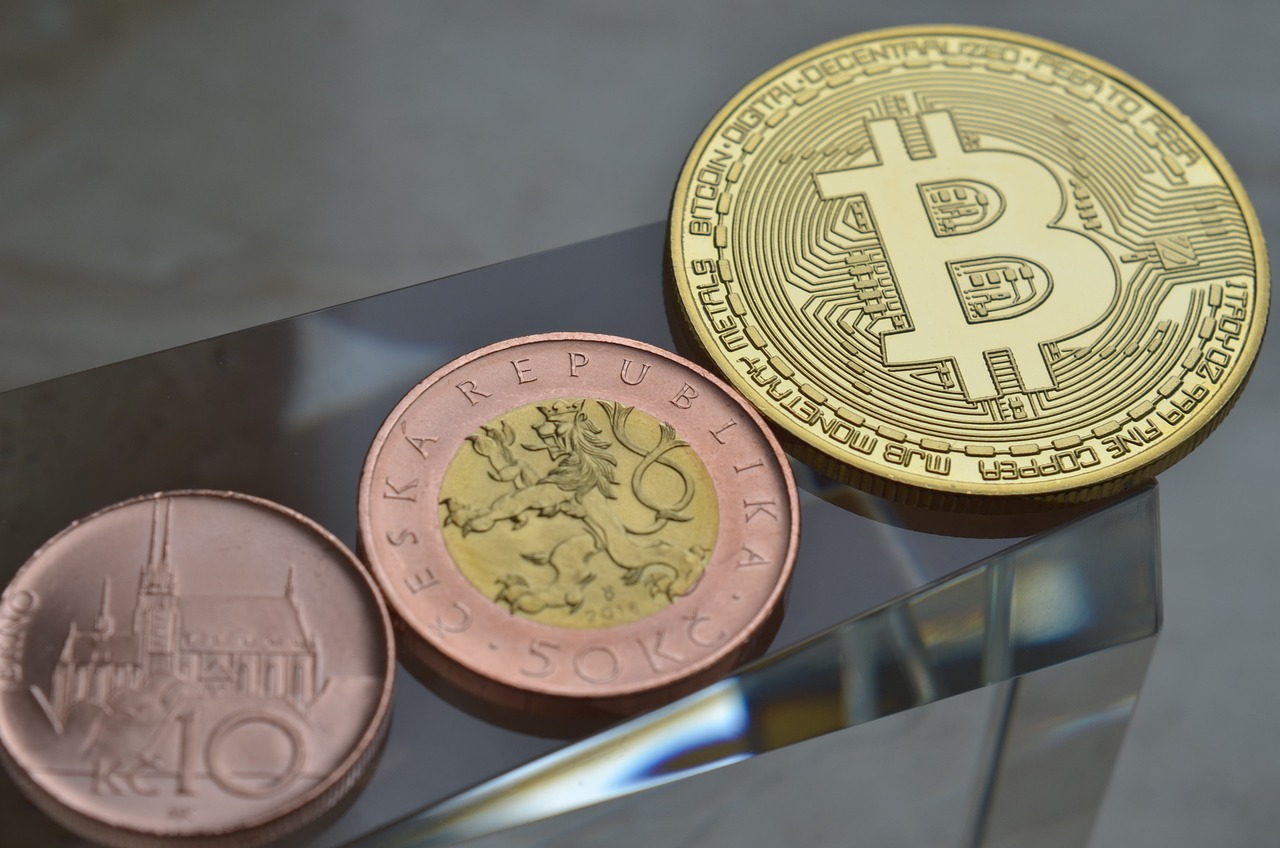
[Enhanced Security]
When we talk about security in the digital realm, it’s essential to recognize that traditional systems often rely heavily on a single point of control. In contrast, blockchain technology employs a decentralized approach that dramatically enhances security. Imagine a fortress with multiple gates; if one gate is breached, the rest still stand strong. This is the essence of how decentralization protects data integrity and reduces vulnerabilities.
In a decentralized network, data is not stored in a single location but is instead distributed across numerous nodes. This distribution means that there is no central authority that can be targeted by malicious actors. Each node maintains a copy of the entire blockchain, and any attempt to alter the data would require altering every single copy simultaneously, which is practically impossible. This characteristic makes blockchain networks inherently more secure than their centralized counterparts.
Moreover, the use of cryptographic techniques in blockchain adds another layer of security. Each transaction is encrypted and linked to the previous one, creating a chain that is virtually unbreakable. If someone were to try and tamper with a block, they would need to not only change that block but also all subsequent blocks. This requirement for immense computational power acts as a deterrent against fraud and hacking attempts.
Additionally, decentralized systems are less susceptible to Denial of Service (DoS) attacks. In a centralized system, overwhelming the server can bring the entire system down. However, in a decentralized network, even if some nodes go offline, the rest of the network continues to function normally, ensuring that services remain available and operational.
To illustrate the enhanced security features of decentralized networks, consider the following table:
| Feature | Centralized Systems | Decentralized Systems |
|---|---|---|
| Single Point of Control | Yes | No |
| Data Duplication | No | Yes |
| Vulnerability to Attacks | High | Low |
| Resistance to Tampering | Low | High |
In summary, enhanced security is one of the standout features of decentralization in blockchain technology. By distributing data across a network of nodes and employing robust cryptographic techniques, blockchain not only safeguards the integrity of data but also ensures that users can engage in transactions with confidence. This shift in how we think about security in the digital age is not just beneficial; it's revolutionary, paving the way for a future where trust is built into the very fabric of our digital interactions.
- What makes blockchain more secure than traditional systems?
Blockchain's decentralized nature means there is no single point of failure, making it much harder for hackers to compromise the system. - How does decentralization protect against data tampering?
Data is stored across multiple nodes, and altering one copy requires changing all subsequent copies, which is nearly impossible. - Can decentralized networks still be attacked?
While they are less vulnerable, decentralized networks can still face attacks, but their structure makes them more resilient.

[Data Integrity]
When we talk about data integrity in the realm of blockchain technology, we're diving into one of the most critical aspects that ensure trust and reliability in digital transactions. Imagine a world where every piece of information you receive is accurate and unaltered, like a well-preserved ancient manuscript that has stood the test of time. This is the essence of data integrity in blockchain. It guarantees that once data is recorded, it cannot be modified or deleted without a consensus from the network, making it a fortress against tampering.
At its core, data integrity is about maintaining the accuracy and consistency of data over its entire lifecycle. In blockchain, this is achieved through a combination of cryptographic techniques and decentralized consensus mechanisms. Each transaction is bundled into a block, which is then linked to the previous block, creating an unbreakable chain of information. This structure not only makes it nearly impossible to alter a single piece of data without affecting the entire chain, but it also ensures that all participants in the network have access to the same version of the truth.
To illustrate how data integrity works in blockchain, consider the following key features:
- Immutable Ledger: Once data is added to the blockchain, it becomes part of a permanent record. This immutability is crucial for applications like financial transactions, where even a minor alteration could lead to significant discrepancies.
- Consensus Mechanisms: Blockchains utilize various consensus algorithms, such as Proof of Work or Proof of Stake, to ensure that all nodes in the network agree on the validity of transactions. This collective agreement is what protects the integrity of the data.
- Cryptographic Hashing: Each block contains a unique cryptographic hash of the previous block, creating a secure link between them. If someone tries to change the data in a block, the hash will change, alerting the network to the tampering attempt.
These features work together to create a system where trust is built into the very fabric of the technology. Users can engage in transactions with the confidence that their data is secure and accurate, much like how a bank guarantees the integrity of your account balance. In industries ranging from finance to healthcare, this assurance is invaluable, as it fosters trust among users, stakeholders, and regulatory bodies.
Furthermore, the implications of data integrity extend beyond just security; they also enhance transparency and accountability. In a decentralized environment, all participants can verify the data independently, which reduces the chances of fraud and corruption. For instance, in supply chain management, each step of a product's journey can be recorded on the blockchain, allowing consumers to trace its origin and verify its authenticity.
In summary, data integrity is not just a technical requirement; it is the cornerstone of trust in blockchain technology. As we continue to explore the vast potential of decentralized systems, ensuring robust data integrity will be essential for their widespread adoption and success.
- What is data integrity in blockchain? Data integrity in blockchain refers to the assurance that data remains accurate, consistent, and unaltered throughout its lifecycle, thanks to the technology's inherent security features.
- How does blockchain ensure data integrity? Blockchain ensures data integrity through immutable ledgers, consensus mechanisms, and cryptographic hashing, which work together to prevent unauthorized alterations.
- Why is data integrity important? Data integrity is crucial because it fosters trust among users and stakeholders, enhances transparency, and reduces the risk of fraud and corruption in transactions.
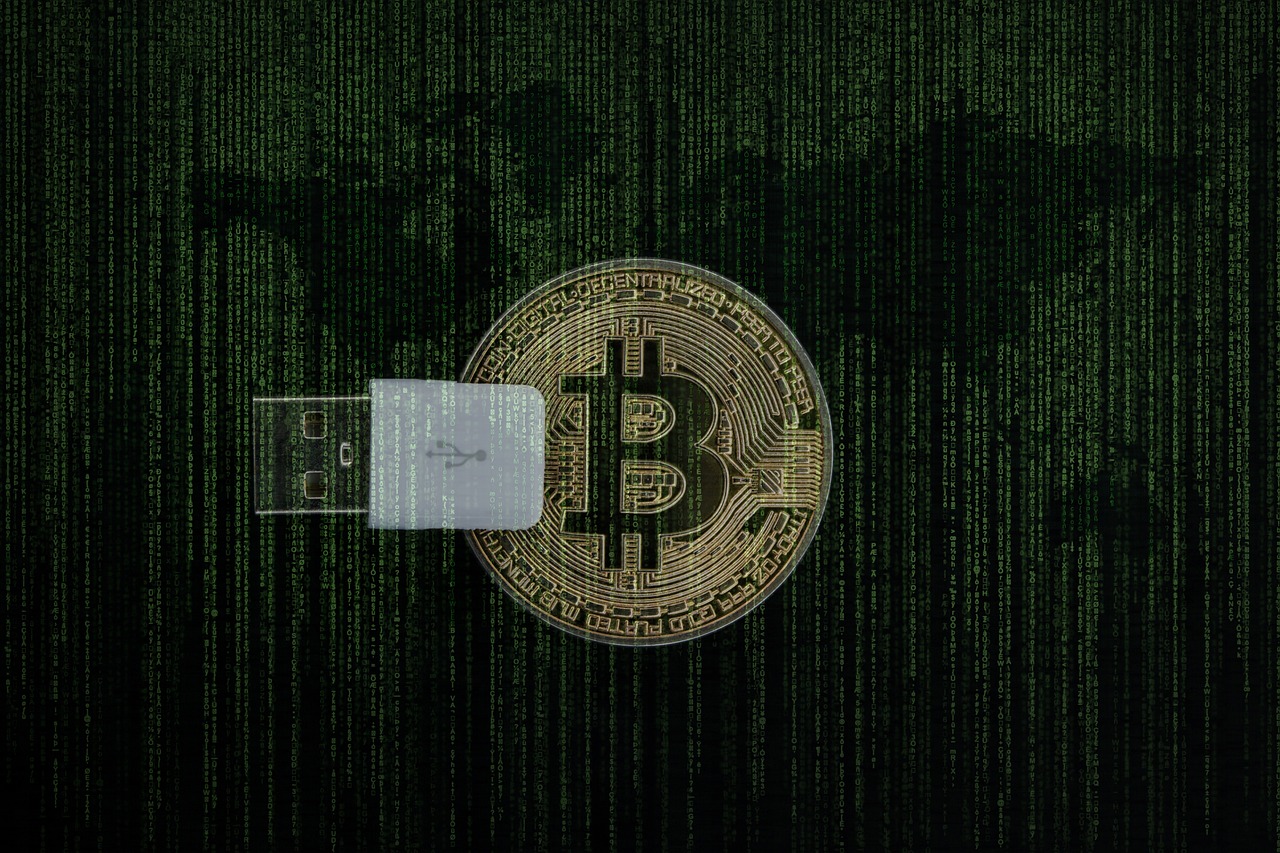
[Resistance to Censorship]
In a world where information flows freely yet is often controlled, the resistance to censorship offered by decentralized systems is nothing short of revolutionary. Imagine a digital landscape where your voice cannot be silenced, where your transactions are shielded from the prying eyes of governments and corporations. This is the essence of decentralization in blockchain technology. It empowers individuals by providing a platform where they can communicate and transact without fear of interference or suppression.
Decentralization achieves this by distributing control across a vast network rather than concentrating it in a single entity. In traditional systems, a central authority can easily impose restrictions or censor content. However, in a decentralized network, no single party has the power to dictate what can or cannot be said or done. This creates an environment that not only promotes freedom of expression but also encourages innovation and creativity.
To illustrate this point, consider the following:
- Freedom of Speech: Users can share their thoughts and opinions without fear of repercussions, fostering an open dialogue.
- Financial Transactions: Individuals can send and receive funds without the risk of their transactions being blocked or reversed by a centralized authority.
- Access to Information: Decentralized platforms can host content that might otherwise be deemed inappropriate or controversial by traditional media outlets.
These features make decentralized systems incredibly appealing, especially in regions where censorship is rampant. For instance, in countries with strict regulations on internet usage, blockchain technology can serve as a lifeline, allowing citizens to bypass oppressive controls and access the information they need. By utilizing decentralized applications (dApps), users can interact with each other directly, ensuring that their communications remain private and unmonitored.
Moreover, the resistance to censorship doesn't just stop at individual empowerment; it has broader implications for society as a whole. When individuals have the ability to speak freely and transact without interference, it fosters a culture of trust and collaboration. Communities can come together to share ideas, create solutions, and drive progress without the fear of being silenced. This is particularly important in a digital age where misinformation can spread rapidly, and the truth can often be obscured.
In conclusion, the resistance to censorship provided by decentralized systems is a powerful tool for promoting freedom and innovation. It offers individuals the autonomy to express themselves and engage in transactions without the looming threat of control from centralized authorities. As we continue to explore the potential of blockchain technology, it is crucial to recognize and embrace this aspect of decentralization, as it holds the key to a more open and equitable digital future.
- What is decentralization? Decentralization refers to the distribution of authority and control away from a central authority, allowing for greater individual empowerment and security.
- How does decentralization resist censorship? By distributing data and control across a network, decentralized systems prevent any single entity from imposing restrictions or censoring content.
- What are the benefits of decentralized systems? Benefits include enhanced security, user empowerment, and the ability to communicate and transact freely without interference.
- Can decentralized systems be completely censorship-resistant? While they significantly reduce the risk of censorship, no system can guarantee complete resistance; however, they offer far greater protection than centralized systems.
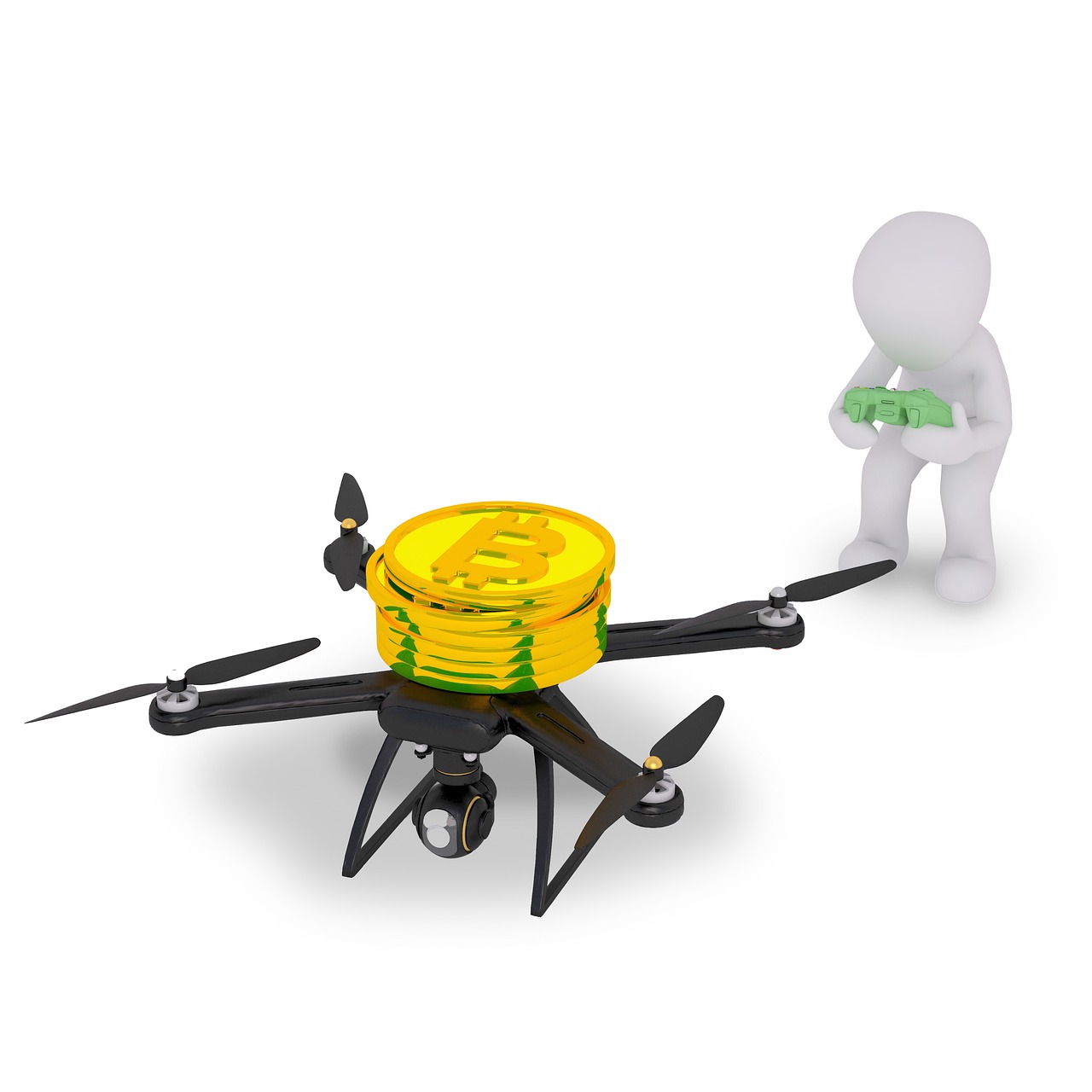
[User Empowerment]
Decentralization is more than just a buzzword; it's a revolutionary shift that empowers users in ways traditional systems simply cannot. Imagine a world where you, as an individual, hold the keys to your own data and transactions, free from the clutches of centralized authorities. This is the reality that decentralization in blockchain technology promises. In a decentralized ecosystem, power is redistributed from a few centralized entities to the many, allowing every user to participate actively in the network. This shift not only enhances user autonomy but also encourages a more inclusive environment where innovation can thrive.
One of the most striking aspects of user empowerment in decentralized systems is the ability to participate in governance. Unlike traditional platforms where decisions are often made behind closed doors, decentralized networks allow users to have a say in how the system operates. This participatory approach fosters a sense of ownership and responsibility among users. Imagine being part of a community where your voice matters, where you can vote on changes that directly affect your experience and the overall health of the network. This kind of engagement transforms users from passive consumers into active contributors.
Moreover, decentralization encourages creativity and innovation. When users are empowered, they are more likely to experiment with new ideas and solutions. This leads to a vibrant ecosystem where developers can create applications that cater to the specific needs of users, rather than being constrained by the limitations of centralized platforms. For instance, consider the rise of decentralized finance (DeFi) applications. These platforms enable users to engage in financial activities—like lending, borrowing, and trading—without the need for traditional banks. This not only democratizes access to financial services but also sparks a wave of innovation that benefits everyone.
However, it's essential to recognize that user empowerment also comes with responsibilities. In a decentralized system, users must be vigilant and informed. The absence of a central authority means that users need to take charge of their own security and privacy. This can be daunting, but it also presents an opportunity for education and growth. As users become more knowledgeable about blockchain technology, they can navigate the system more effectively, making informed decisions that enhance their overall experience.
In summary, user empowerment is a cornerstone of decentralization in blockchain technology. By redistributing power and encouraging active participation, decentralized systems create an environment ripe for innovation and creativity. Users no longer have to rely on centralized authorities; instead, they can take control of their digital lives, fostering a community that values transparency, security, and collaboration. The future of blockchain is not just about technology; it's about the people who use it and how they can shape it to meet their needs.
- What is decentralization? Decentralization refers to the distribution of authority and control away from a central entity, allowing users to have more power over their data and transactions.
- How does decentralization empower users? It empowers users by giving them a voice in governance, enhancing their autonomy, and encouraging innovation and creativity within the network.
- What are the responsibilities of users in a decentralized system? Users must be informed and vigilant, taking charge of their own security and privacy without relying on a central authority.
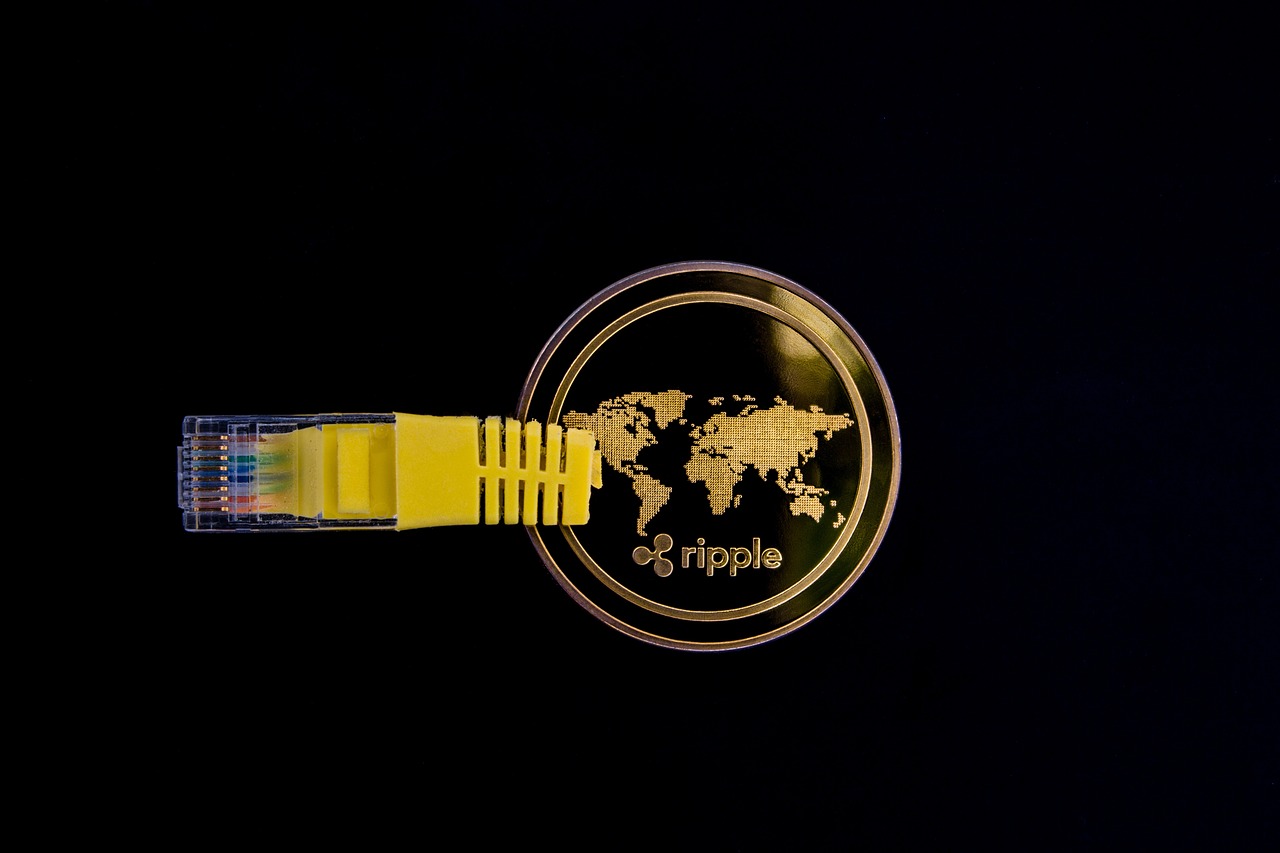
[Challenges of Decentralization]
While decentralization in blockchain technology is a game changer, it doesn't come without its fair share of challenges. Imagine trying to build a house without a solid foundation; that's what implementing decentralization can feel like in the world of digital transactions. The challenges of decentralization can significantly hinder its potential if not addressed properly. Let's dive into some of the key obstacles that blockchain enthusiasts and developers face, ensuring we have a comprehensive understanding of the landscape.
First and foremost, one of the most pressing issues is scalability. As the number of users and transactions on a blockchain network increases, the system can struggle to keep up. This is akin to a popular restaurant that becomes so crowded that customers have to wait hours for a table. In blockchain, this can lead to slow transaction times and higher fees, which can deter users from adopting the technology. Solutions like sharding and layer-2 scaling are being explored to alleviate these issues, but they come with their own sets of complexities.
Another significant challenge is governance complexities. In a decentralized system, decision-making is often distributed among many stakeholders, which can lead to confusion and conflict. Think of it like a group project in school where everyone has a different idea of what the final product should look like. Without a clear leader or unified vision, progress can stall. Governance models like on-chain voting and community proposals are being tested, but they require a delicate balance between inclusivity and efficiency.
Moreover, the lack of a centralized authority can make it difficult to implement regulatory compliance. Different jurisdictions have varying rules and regulations regarding cryptocurrency and blockchain technology. This patchwork of regulations can create uncertainties for businesses looking to operate in this space. Just like navigating through a maze blindfolded, companies often find themselves lost, unsure of how to proceed without running afoul of the law.
Despite these challenges, the potential of decentralization is undeniable. It promises a future where users have greater control over their data and transactions. However, to realize this potential, the community must work collaboratively to overcome these hurdles. Addressing scalability and governance issues, while also ensuring compliance with regulations, will be crucial for the success of decentralized networks.
- What is the main challenge of decentralization? The main challenges include scalability issues, governance complexities, and regulatory compliance.
- How can scalability issues be addressed? Solutions like sharding and layer-2 scaling can help improve transaction speed and efficiency.
- What are governance complexities in decentralized systems? These refer to the difficulties in decision-making when authority is distributed among many stakeholders, leading to potential conflicts and confusion.
- Why is regulatory compliance a challenge? Different jurisdictions have varying regulations regarding blockchain and cryptocurrency, creating uncertainty for businesses operating in this space.

[Scalability Issues]
When we talk about scalability in the realm of blockchain technology, we’re diving into one of the most pressing challenges that developers and enthusiasts face today. Imagine a bustling city where every single transaction—be it a coffee purchase or a real estate deal—requires a lengthy approval process. That's somewhat akin to how traditional blockchains operate when they are under heavy load. The more people trying to use the network, the slower and more cumbersome it becomes. This is a significant concern because, as blockchain technology gains traction across various industries, the ability to handle a growing number of transactions efficiently is crucial.
Currently, many blockchain networks, like Bitcoin and Ethereum, encounter what is known as the scalability trilemma. This concept posits that it’s challenging to achieve all three of the following at the same time: decentralization, security, and scalability. As the network expands, achieving a balance between these three elements becomes increasingly difficult. For instance, increasing the block size might lead to faster transaction times, but it could also centralize the network, as only those with significant resources could maintain a full node. This is a classic case of having to make tough choices.
To tackle scalability, several solutions are being explored and implemented:
- Layer 2 Solutions: Technologies such as the Lightning Network for Bitcoin and various rollups for Ethereum aim to process transactions off the main blockchain, reducing congestion.
- Sharding: This method involves splitting the blockchain into smaller, more manageable pieces, allowing for parallel transaction processing.
- Alternative Consensus Mechanisms: Moving away from proof-of-work (PoW) to proof-of-stake (PoS) can significantly increase transaction speeds and lower energy consumption.
While these solutions show promise, they also come with their own set of challenges. For example, while Layer 2 solutions can enhance speed, they might also complicate the user experience or introduce new security vulnerabilities. Therefore, the quest for scalability is not just about making transactions faster; it’s about ensuring that the network remains secure and user-friendly.
In conclusion, addressing scalability issues is essential for the widespread adoption of blockchain technology. The ongoing innovations in this space are akin to a race, where the finish line is a robust, efficient, and scalable blockchain that can support the demands of a digital economy. As we continue to explore these advancements, it’s clear that the future of blockchain will depend heavily on how well we can overcome these scalability hurdles.
Q: What is scalability in blockchain?
A: Scalability refers to the ability of a blockchain network to handle a growing amount of transactions efficiently. It is a crucial aspect that determines how well a blockchain can perform under increased demand.
Q: Why is scalability an issue for blockchain?
A: Scalability becomes an issue when the number of transactions exceeds the network's capacity, leading to slower processing times and higher fees. This can hinder user experience and limit the technology's adoption.
Q: What are Layer 2 solutions?
A: Layer 2 solutions are technologies built on top of a blockchain that help improve transaction speeds and reduce congestion by processing transactions off the main blockchain.
Q: How does sharding work?
A: Sharding involves dividing the blockchain into smaller segments, or "shards," allowing multiple transactions to be processed simultaneously, which can significantly enhance scalability.

[Governance Complexities]
When we talk about decentralization, it's easy to get swept up in the excitement of a world where power is distributed among the many rather than concentrated in the hands of a few. However, this shift brings with it a set of challenges, particularly in the realm of governance. Decentralized systems, by their very nature, require a different approach to decision-making and management. Unlike traditional centralized organizations that have clear hierarchies and responsibilities, decentralized networks often face complexities that can hinder their effectiveness.
One of the primary issues with decentralized governance is the absence of a singular authority to make decisions. In a centralized system, if a problem arises, there is usually a designated leader or board that can step in and provide direction. In contrast, decentralized networks must rely on consensus among participants, which can lead to prolonged discussions and sometimes even stalemates. Imagine trying to organize a group of friends to decide on a movie to watch, where everyone has a different opinion and no one wants to compromise. It can be chaotic, right?
To illustrate these complexities, consider the different governance models that exist within blockchain networks. Some are more democratic, allowing all participants to vote on proposals, while others may employ a system where only certain stakeholders have the voting power. Each model comes with its own set of implications:
| Governance Model | Description | Pros | Cons |
|---|---|---|---|
| Liquid Democracy | Combines direct and representative democracy, allowing users to delegate their votes. | Flexibility and empowerment of users. | Can lead to confusion and delegation fatigue. |
| Token-Based Governance | Voting power is proportional to the number of tokens held. | Encourages investment in the network. | Risk of centralization among wealthy stakeholders. |
| Consensus Mechanisms | Decisions are made based on consensus protocols (e.g., Proof of Stake). | Security and alignment of incentives. | Complexity in implementation and potential for collusion. |
These governance models highlight the balancing act that decentralized networks must perform. On one hand, they strive to maintain fairness and inclusivity, while on the other, they grapple with the need for efficient decision-making. The challenge is akin to herding cats; while each cat (or participant) has its own agenda, the goal is to reach a common destination.
Moreover, as these networks grow, the stakes get higher. Larger communities can lead to increased disagreements and more complex dynamics. It's like a family reunion where everyone has their own opinions about what to serve for dinner. The more people involved, the harder it becomes to reach a consensus. Thus, managing governance in decentralized systems is not just about creating rules but also about fostering a culture of collaboration and understanding among diverse participants.
In conclusion, while decentralization offers a revolutionary approach to governance, it is not without its challenges. The complexities of decision-making in decentralized networks require innovative solutions and a willingness to adapt. As the blockchain landscape continues to evolve, so too will the strategies for managing these intricate governance structures. The future of decentralized governance will depend on our ability to navigate these complexities and find a balance that promotes both participation and efficiency.
- What is decentralized governance? Decentralized governance refers to the decision-making processes in blockchain networks where power is distributed among participants rather than held by a central authority.
- What are the challenges of decentralized governance? Key challenges include decision-making complexities, potential for stalemates, and the need for efficient consensus among a diverse group of stakeholders.
- How can these challenges be addressed? Solutions may involve developing clear governance models, fostering a collaborative culture, and utilizing technology to streamline decision-making processes.
Frequently Asked Questions
- What is decentralization in blockchain technology?
Decentralization refers to the distribution of authority, data, and control across a network, rather than being concentrated in a single entity. In blockchain, this means that no single party has control over the entire system, enhancing security and transparency.
- What are the main benefits of decentralization?
Decentralization offers several advantages, including increased security, reduced risk of fraud, and greater user control. By distributing data across multiple nodes, blockchain networks become more resilient against attacks and manipulation.
- How does decentralization enhance security?
Decentralization enhances security by spreading data across a network of nodes. This distribution reduces vulnerabilities, making it significantly harder for hackers to compromise the entire system. Each node validates transactions, ensuring data integrity.
- What is data integrity and why is it important?
Data integrity refers to the accuracy and consistency of data over its lifecycle. In blockchain, decentralization ensures that once data is recorded, it cannot be altered without consensus from the network, thereby fostering trust among users.
- Can decentralized systems be censored?
No, decentralized systems are inherently resistant to censorship. This means that users can communicate and transact freely without fear of interference from centralized authorities, promoting freedom of expression.
- How does decentralization empower users?
Decentralization shifts power from centralized entities to individual users, allowing them to participate actively in the network. This empowerment encourages innovation and collaboration within blockchain ecosystems, making them more dynamic.
- What challenges does decentralization face?
While decentralization has many benefits, it also presents challenges like scalability issues and governance complexities. Addressing these obstacles is crucial for the successful implementation of decentralized systems.
- What are scalability issues in decentralized networks?
Scalability issues arise when a blockchain network struggles to handle a growing number of transactions efficiently. This can lead to slow transaction speeds and increased costs, which are critical challenges that need to be addressed.
- What are governance complexities in decentralized systems?
Decentralized governance can complicate decision-making processes, as there is no central authority. Different governance models exist, each with its implications for network management and user participation, making it essential to find a balance.



